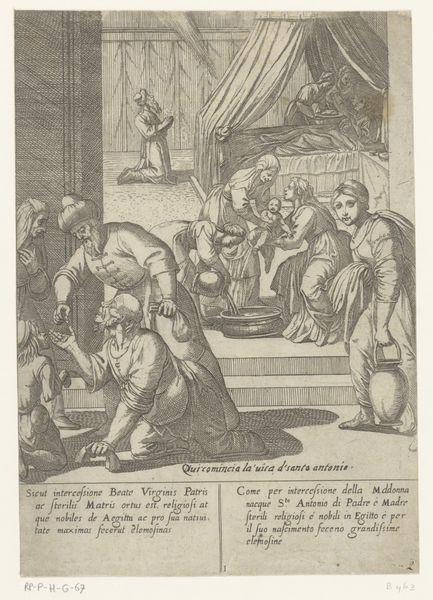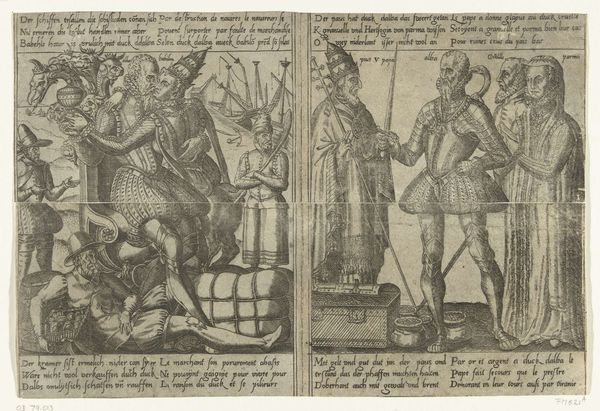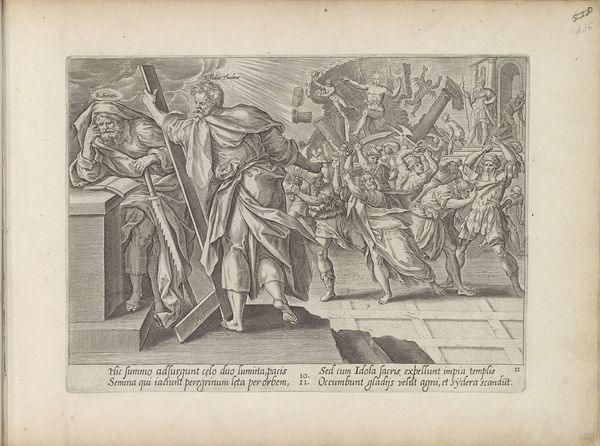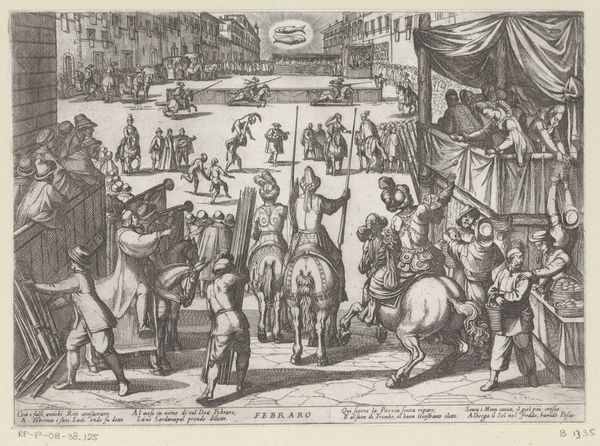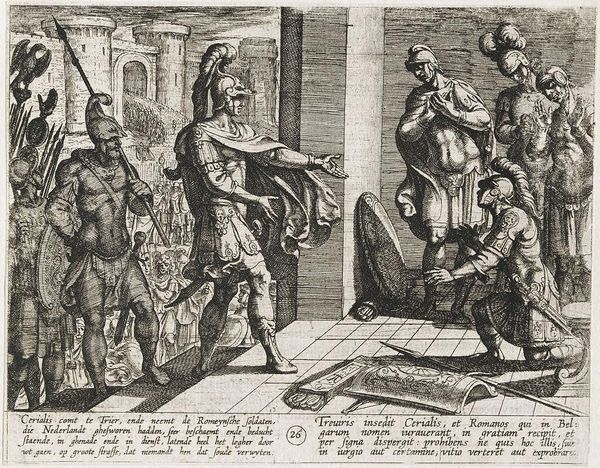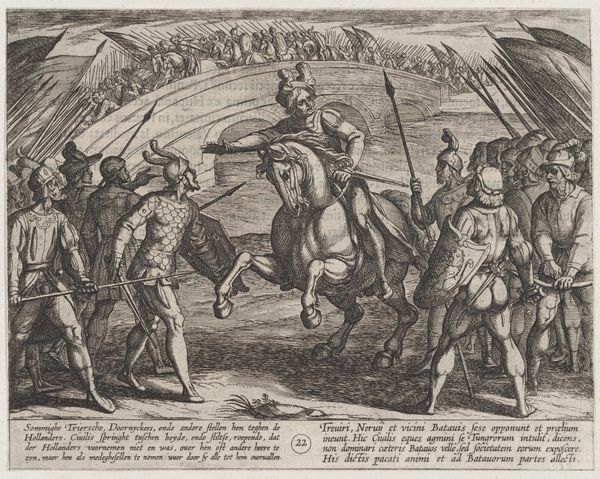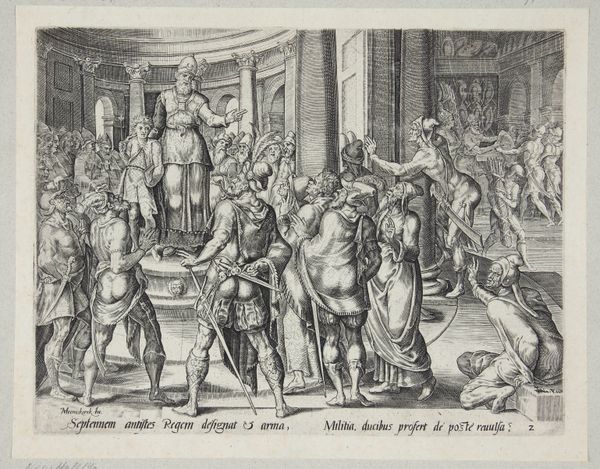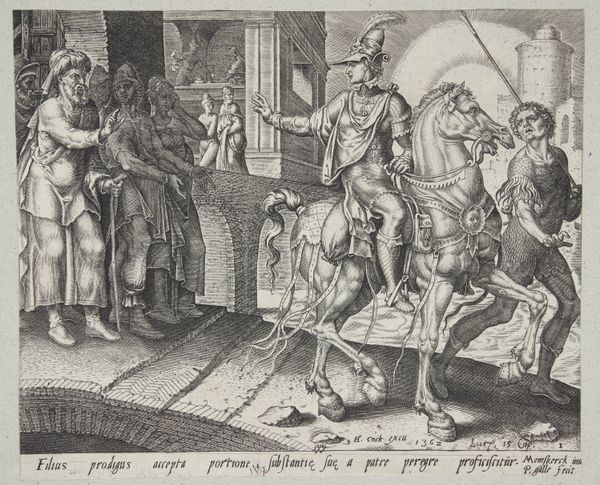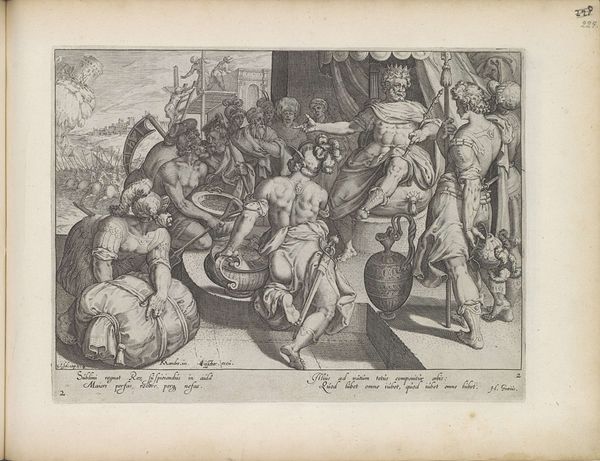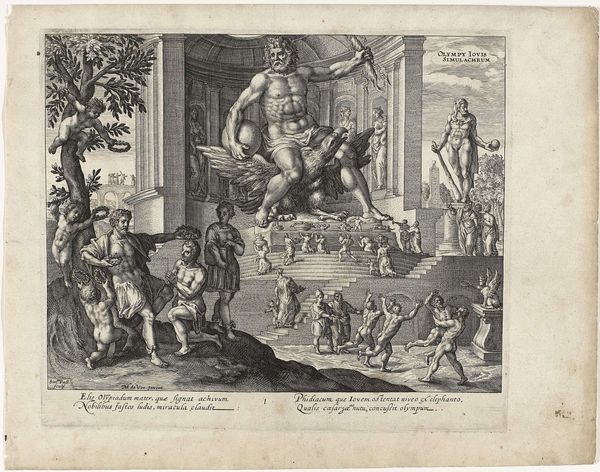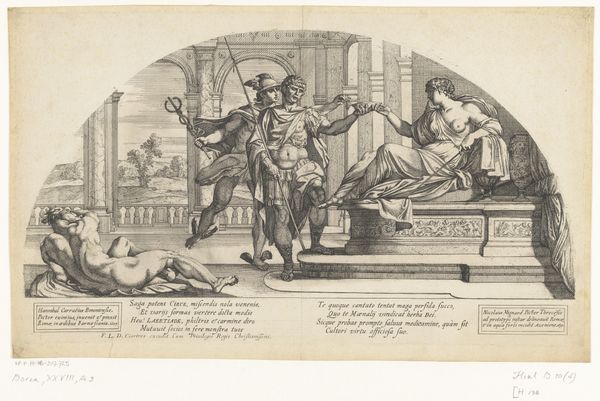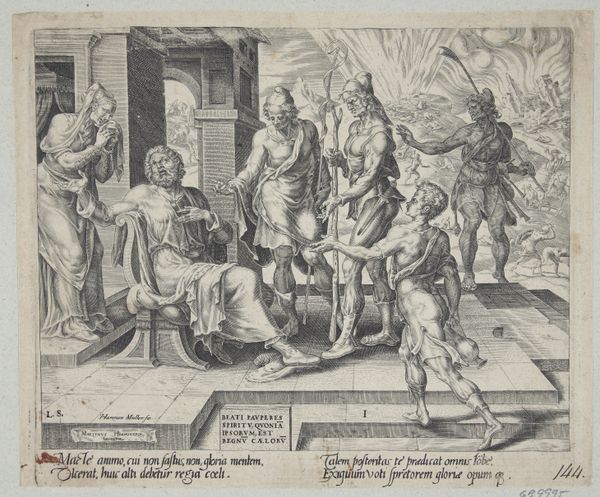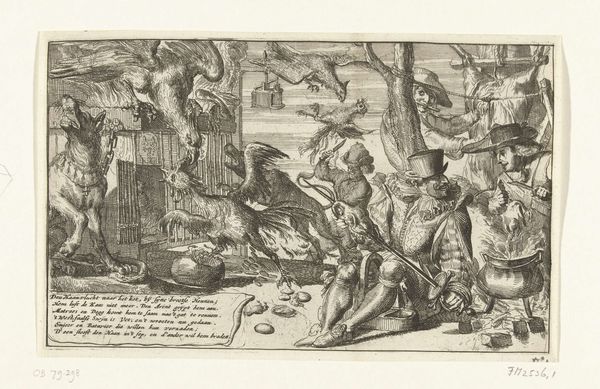
Plate 26: Cerialis Pardons and Relieves Roman Soldiers who had Helped Civilis, from The War of the Romans Against the Batavians (Romanorvm et Batavorvm societas) 1611 - 1612
0:00
0:00
drawing, print, engraving
#
portrait
#
drawing
#
narrative-art
# print
#
human-figures
#
figuration
#
romanesque
#
soldier
#
history-painting
#
engraving
Dimensions: Sheet: 6 3/8 × 8 1/8 in. (16.2 × 20.7 cm)
Copyright: Public Domain
Curator: Ah, yes, "Plate 26: Cerialis Pardons and Relieves Roman Soldiers who had Helped Civilis," an engraving by Antonio Tempesta, dating back to the early 17th century. Look at that precise detail! It’s less an illustration of an event and more a stage for a philosophical musing. Editor: Right. It’s like a freeze-frame from a play. I'm intrigued by the visual hierarchy: the forgiving general looming over the kneeling soldiers. What narrative threads do you pull from it? Curator: See how Tempesta orchestrates the composition. He divides the scene. One side holds stern justice while the other welcomes those who have faltered, seeking forgiveness. Consider this through a broader lens: We witness Cerialis granting clemency not just to soldiers, but perhaps to parts of ourselves. We see both transgression and the possibility of absolution. Don’t you think it’s oddly comforting? Editor: That's insightful. The almost theatrical gesture really underlines that concept of forgiveness being a conscious act. And the architectural background feels like a societal framework for this play of morality. Curator: Precisely. Are those high, impenetrable walls not projections of the constraints that shape us? How often do we feel trapped in such stark compositions, craving that outstretched hand offering respite from judgment? Perhaps the image resonates because we recognize a similar, internalized battlefield, where we battle not Romans, but our demons and misjudgments. Editor: So it's not just a history lesson; it's about our own personal narratives of redemption, framed by self-imposed walls. The print becomes a mirror. That gives me a totally different appreciation. Curator: Exactly! Sometimes, what seems like a distant, historical echo is actually a reflection staring right back. What do you think? Editor: I’ll never look at engravings the same way. I saw a historical snapshot, but now I see something more personal, almost like a map of human fault lines and potential healing. Thanks!
Comments
No comments
Be the first to comment and join the conversation on the ultimate creative platform.
